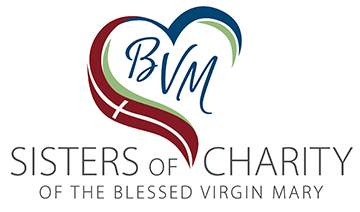The Web of Life and Integral Ecology: A Both-And Reality

“Your toe bone connected to your foot bone,
Your foot bone connected to your heel bone,
Your heel bone connected to your ankle bone,
Your ankle bone connected to your leg bone . . .”
The catchy melody of this African American Spiritual, “Dem Bones,” composed by civil rights activist James Weldon Johnson, came to me as I reflected on the “Web of Life” and “Integral Ecology” and how everything and everyone is interconnected.
Many of us I suspect, have been living our lives through the lens of the “Web of Life” for decades recognizing that everything is connected and interrelated. More recently, the term “Integral Ecology” coined in Pope Francis’ Encyclical, Laudato Si’: On Care of our Common Home, connotes that all aspects of life—environmental, social, economic, and cultural are interconnected. He wrote, “Everything is interconnected: and genuine care for our own lives and our relationship with nature are inseparable from fraternity (community), justice, and faithfulness to others. (LS 70).
It is about how we relate and view each other, to non-human creation, and to God. It is about what happens when those relationships rupture and what is possible when we get those relationships right.
Another insight from LS 139 is, “When we speak of the environment, what we really mean is a relationship existing between nature and the society which lives in it. Nature cannot be regarded as something separate from ourselves or a mere setting in which we live. We are part of nature, included in it and thus in constant interaction with it . . . We are faced not with two separate crises, one environmental and the other social, but with one complex crisis which is both social and environmental. Strategies for a solution demand an integrated approach to combating poverty, restoring dignity to the excluded, and at the same time protecting nature.” It is a both-and reality.
The “Web of Life” and “Integral Ecology” seek to respond to the current multi-dimensional crisis—the cry of the earth AND the cry of the poor. This is not a new insight to our BVM Community, as reflected in our recent Directional Statements,
“We, together as BVM Sisters and Associates, drawn by grace
into living more profoundly into the mystery of God
into living more consciously our interconnectedness with all creation…
and commit ourselves humbly, boldly, and courageously
to participate and join others in profound institutional shifts transforming our congregation, church, and society toward a more just, inclusive, equitable, and sustainable world for all
to engage and collaborate with those suffering injustices and a lack of resources for all life to flourish
to seek conversation with and listen deeply to people with divergent perspectives, cultures, and experiences
to widen our global awareness and connections.”
We have been on this journey together and now have new language to describe this “Web of Life” as we live into the future. I return to the melody of the song “Dem Bones” and add a few lyrics of my own. (To be truthful I simply can’t get the tune of my head! I encourage you to write your own version—the possibilities are endless!).
“The earth is connected to the human,
The human is connected to the ocean,
The ocean is connected to the fish,
The fish is connected to the coral reef. O hear the word of God…”

Well said, Nancy! (And now I have that good old song in my head.) 🙂
Nancy,
Thanks for the reflection. As I start my work at Clarke, I’m looking forward to doing a deep dive into Pope Francis’ encyclical. Your post has spurred my interest even more! Now, if you could help me get the “Dem Bones” earworm out of my brain, you would be a rock star!
You’re correct in saying we’ve been living this interconnection for a number of years now, Nancy. Thanks for giving us a way of naming and describing that connection through the words and melody of a familiar folk song by a Black American poet.
Nancy, I so know that song, “Dem Bones” from my years as a primary and kindergarten educator. You have provided me with a whole new perspective. Nicely done! Thank you!
Nancy,
Thank you for this very current article. “Dem Bones” is a perfect song for this topic. I sang that song over and over again as a member of 4-H growing up in northwest Missouri. We loved singing it and adding actions to the song. It is ever more relevant today as we deepen our understanding cosmically about interconnections. The latest cosmic pictures are reminders not only of current connections but also of future connections.
Thanks again.
Thanks, Nancy and might I add “The earth and all a part of it are gonna rise again”!
Thank you, Nancy, for your work on this reflection. I have two comments in response:
1. For me, the statement you cite from Laudato Si’ does not go far enough (“Nature cannot be regarded as something separate from ourselves or a mere setting in which we live. We are part of nature, included in it and thus in constant interaction with it.) For me, this statement still exhibits a subtle notion that we are separate – “part of nature” – rather than a definitive notion that we ARE nature. The latter for me calls forth all sorts of new ways of thinking about ourselves. We are not just “included in” nature and therefore dependent on it for our survival. We emerged from nature and go through the same processes of life that all things present in nature do, because we ARE nature. As an example, just as the seed of the oak carries the potential to grow into a great tree, we are a seed of a human with the potential to grow into all we can be as a loving, effective human being, but we must have the correct nourishing environment throughout our days to do so. Seeing more clearly this reality may help us assure that all human “seeds” have what they need to thrive and contribute.
2. Your having written this post calls me to wish that at the time I was an author of the directional statements I had had the awareness to state the opening as “Together, we BVMs, Associates, and Staff,….” I would be interested to know how you and other staff members – for whom we are so grateful and could not do what we do without your help – would feel about such an editorial change.
Thank you again, Nancy, for all you are doing to help further awaken us to the call for justice. I am glad we share the same particular corner of the web of life.
Pat
Hi Pat,
As an associate and a congregational employee, I would agree with the spirit behind the language change you suggest in point #2. I would note that I strongly feel that it is the responsibility of all BVM employees to live out the directional statements in our work lives, even if the language doesn’t get officially changed to specify employees. As an associate, it is part of how I strive to live out the directions in my personal life. Thankfully, the BVM’s core value of freedom empowers us to live it out as individually led. your comments about point #1 are going to give me something to think about for a while. Thanks!
Thanks, Nancy for your creative sharing calling us/me to think into the depths of integral ecology. Loved reading the comments and further plunging into what does it mean when we say “We ARE Nature” (Pat’s sharing). You are also helping me to make the connections between our Directional Statements, our LSAP commitment, and music, both old and new which calls forth a whole-body response. It makes me think of a video which starts with a dot in the universe and then zooms in and back out to the earth. How can I even begin to fathom the awesomeness of we are all one, we are nature, we are all interconnected and interdependent on each other. We are all responsible for the “Web of Life” surviving.
Thanks, Pat, for your suggestion of adding “Staff” or maybe we can say “circle of friend’s (Didn’t Saskia coin that term?), which even goes beyond.